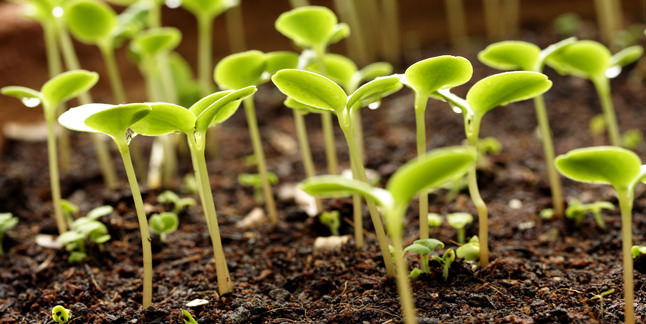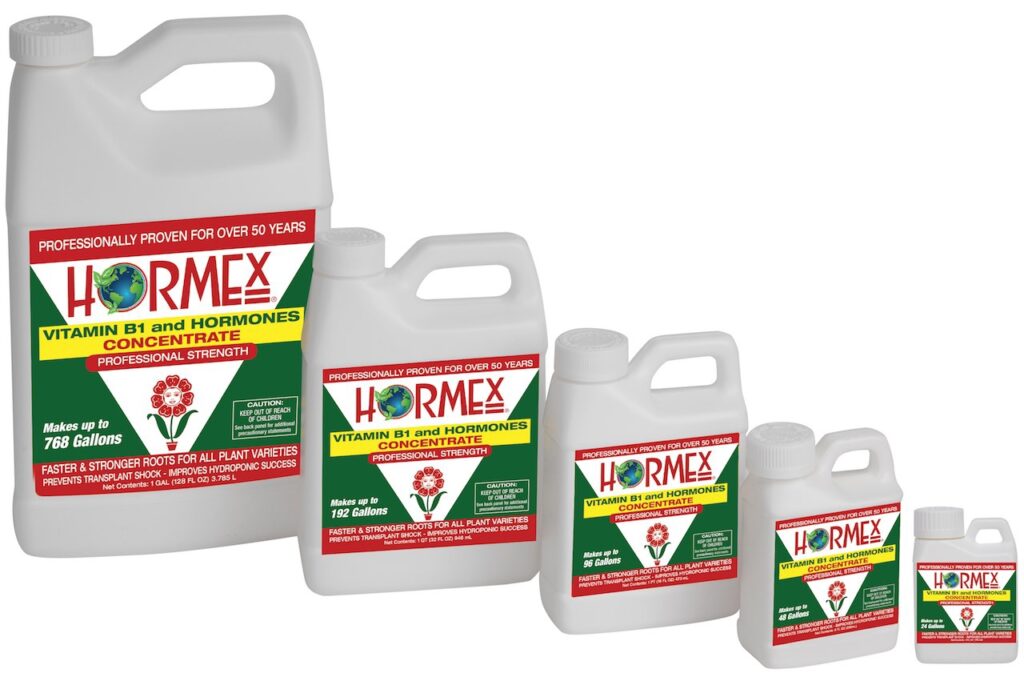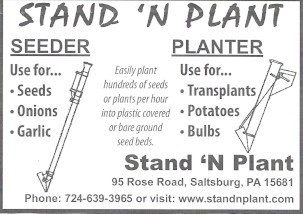
Being well versed in the cloning process is imperative for any indoor horticulturist or greenhouse hobbyist who wishes to have a perpetual garden. The horticultural term “cloning” refers to taking a cutting from a donor plant with the purpose of replicating the particular genetic traits of that plant. Perhaps a grower wants to replicate the most vigorously growing basil plant in his or her garden in order to boost yields or maybe he or she has stumbled upon the tastiest tomato variety and wishes to grow it season after season.
Whatever the reason, successful cloning opens a whole world of possibilities for a horticulturist. That being said, the cloning stage is one of the hardest stages to master due to the necessity of consistent temperature control and, in most cases, higher humidity. Because of this, many gardeners choose to dedicate a specific area to just cloning. This could be as simple as a humidity dome teamed with a seedling heat mat or as complicated as an entire room dedicated to replicating various plants. Once the environmental conditions have been addressed, a horticulturist can focus on another important contributing factor to cloning success: root stimulation.
A fresh cutting will have leaves and a stem, but will lack a vital part of the plant: the root system. It goes without saying that a plant without a root system will not be able to survive very long. Therefore, it is important to provide cuttings with everything they need to quickly sprout new roots. In order to accelerate this initial rooting process, many gardeners choose to use synthetic rooting hormones and/or organic rooting stimulators.

Rooting Hormones
Rooting hormones are the plant hormones responsible for stimulating root growth. These hormones actually occur naturally in the plant and are the reason some plant varieties will sprout roots quickly when a cutting is simply placed in water. Auxins are plant hormones responsible for a wide variety of plant development. This includes embryo development, induction of cell division, vascular tissue differentiation, fruit and flower development, tropic behaviors, stem elongation and the initiation of root growth. Indole acetic acid, or IAA, is the auxin most responsible for root stimulation.
Hormones commonly found in rooting gels, liquids, and powders are synthetic versions of this auxin hormone. The two synthetic hormones most frequently found in these products are indolebutyric acid (IBA) and napthaleneacetic acid (NAA). When a finicky plant variety won’t root in straight water or when time is of the essence, gardeners can reach for a product that contains one or both of these synthetic hormones. As previously mentioned, these conventional synthetic hormones come in various forms, including gels, liquids and powders. Each has its own advantages and disadvantages. It should be noted that synthetic rooting hormones are not organic certifiable. In other words, when synthetic rooting hormones are used it is not an organic method of cloning and is generally avoided by organic purists.
Synthetic Rooting Gels
Synthetic rooting gels are the most popular root stimulator used by indoor horticulturists and greenhouse hobbyists. They are both convenient and powerful. Synthetic rooting gels require no dilution and already have the appropriate hormone levels. A common technique is to pour a small amount of gel into a separate container for dipping. Pouring the gel into a separate container eliminates the possibility of spreading contamination to future cuttings. After a cutting has been taken, the grower can dip the freshly cut section into the gel, covering the entire “cut” portion. The cutting is then immediately placed in the desired cloning medium. After all the cuttings have been dipped, the remaining used gel should be discarded.
A rooting gel’s viscosity is one of its largest advantages. Gels tend to completely cover the freshly cut section and remain there longer than other forms of synthetic rooting hormones. This allows the plant tissue to absorb more of the synthetic hormones that promote root growth. Gel is also less likely to wash or rub off when used in an aeroponic clone machine and, therefore, gels are most commonly used with that method of cloning. The biggest disadvantage of gels is that they tend to be more expensive and have a shorter shelf life than liquids or powders.
Synthetic Rooting Liquids
Synthetic rooting liquids come in ready-to-use or concentrated forms. The ready-to-use liquids are used in a manner similar to gels. The concentrated liquids require the horticulturist to dilute the liquid before use. This can be viewed as either an advantage or a disadvantage. Diluting requires an extra step and needs to be done correctly to avoid problems. However, it also gives the grower some control over the strength of the rooting hormone. This can come in quite handy for varieties of plants that are difficult to clone. For example, many “woody” stemmed plants do not clone easily and a more concentrated rooting hormone can help the root production for those plants. Concentrated liquid rooting hormones are more versatile than gels or powders and offer a good bang for the buck.
Synthetic Rooting Powders
Synthetic rooting powders are more commonly used by commercial growers versus hobby growers. This is due mainly to the long shelf life and relatively inexpensive price tag. If kept dry, rooting powders will remain stable for many years. When using a synthetic rooting powder, a grower may wish to wet the freshly cut section of the plant with water so that more powder sticks and covers a larger area. Like liquid and gels, it is always best to pour some powder out instead of dipping directly into the package to avoid potentially spreading diseases. If getting the most bang for your buck is what you are after, synthetic rooting powders are the best choice.
Organic Root Stimulators
Organic horticulture is a growing trend (pun intended). Many organic purists struggle with the cloning stage because they do not want to use synthetic rooting stimulators. This is especially true when they are trying to replicate a difficult to clone plant variety. The good news is more companies are starting to recognize the need for organic cloning products and are beginning to develop products made from natural or organic sources designed specifically for root stimulation.
Willow Extract
Willow extract is probably the most powerful and effective organic rooting stimulator available. There are now organic rooting products which contain willow extract as the main active ingredient. The high amount of auxin hormones contained in the willow extract is the main reason it is so effective; more specifically, salicylic acid (SA) and indolebutyric acid (IBA). Salicylic acid is a hormone associated with a plant’s natural defense system. Indolebutyric acid (IBA) was once thought to be available only in synthetic form, but it is now known that it is contained in very high concentrations in the growing tips of willow branches. Rooting products made from willow extract contain both of these effective hormones and can rival even the most potent synthetic rooting stimulators. In fact, it is not at all uncommon for horticulturists to observe new root shoots on their clones in just a matter of days when using products derived from willow extract.
Beneficial Microorganisms
Although beneficial microorganisms are not actually hormones that promote root growth, they can be used as an organic root stimulator. This is because many beneficial microorganisms create a symbiotic relationship with the plant’s root system. If provided at the cutting stage, beneficial microorganisms can accelerate root growth as soon as the plant’s natural hormones create the initial root tip. The use of beneficial microorganisms in the cloning stage is becoming a more common practice among organic growers because it can greatly speed up the time it takes for the cutting’s root system to become established.
Honey
It may sound a little crazy, but honey can be used as an organic substitute to synthetic rooting gels. It has a similar viscosity and, therefore, does a great job at covering the entire cut section of the clone. In fact, honey can be used in the exact same way as a synthetic rooting gel. Honey has natural, powerful antiseptic and anti-fungal properties. These protect tender cuttings from pathogens while the plant’s natural hormones initiate root growth. The disadvantage of honey is that it generally takes longer to see roots than with willow extract or synthetic hormones. However, honey can be viewed as a purely organic way for growers to clone successfully.
Aside from consistent environmental conditions and sanitary equipment, the rooting stimulator used will be the biggest contributing factor to successful cloning. Conventional methods, including synthetic gels, liquids, and powders, have been proven effective and are surely the most popular approach for most horticulturists. Organic growers who really want the entire life cycle of the garden to be all natural will have to avoid synthetic rooting hormones and opt for a different approach. Willow extract, beneficial microorganisms, and honey are just three all-natural methods which organic purists can count on for cloning.
As the demand for more organic root stimulators increases, more companies will place an emphasis on developing organic-based products for stimulating root growth. The method used ultimately comes down to the horticulturist’s preference and the type of plants he or she wishes to replicate. Whether it is done synthetically or organically, mastering the cloning stage is the ultimate foundation for a consistent, perpetual garden.
Eric Hopper resides in Michigan’s beautiful Upper Peninsula where he enjoys gardening and pursuing sustainability.
Product photo provided by Hormex. For more information visit Hormex.com.
Related Articles
Early Growth Fertilizer Regiments for Propagation & Vegetative Stages
Plant Propagation Calendar – What You Should Be Doing Each Month of the Year




Comment here